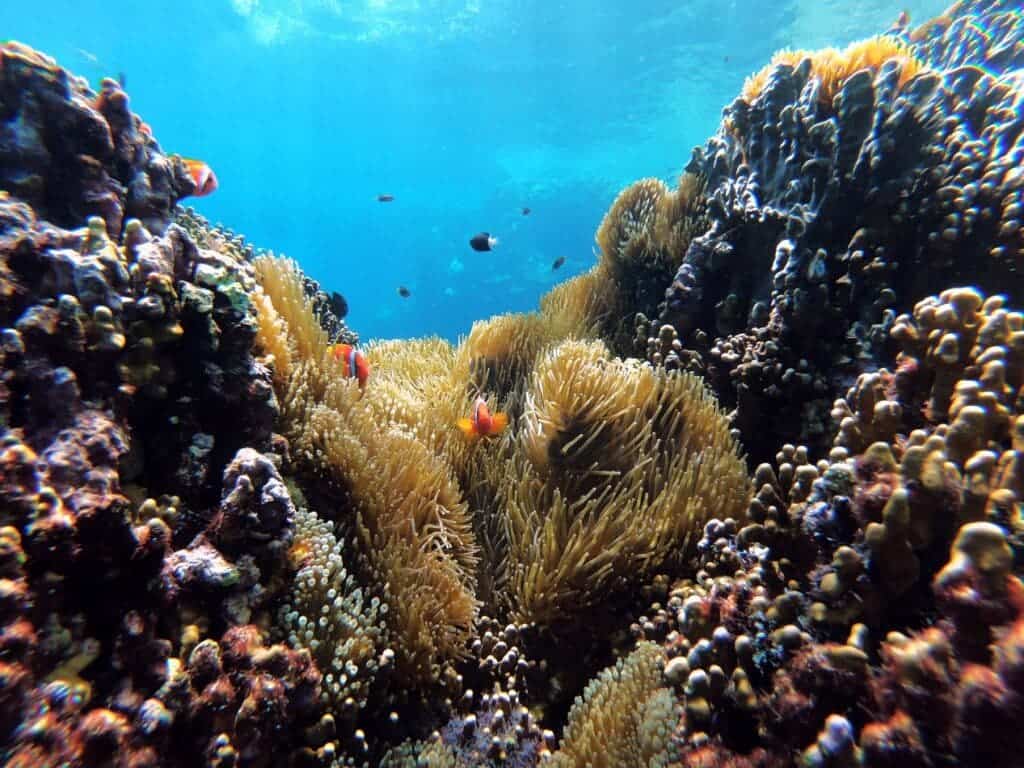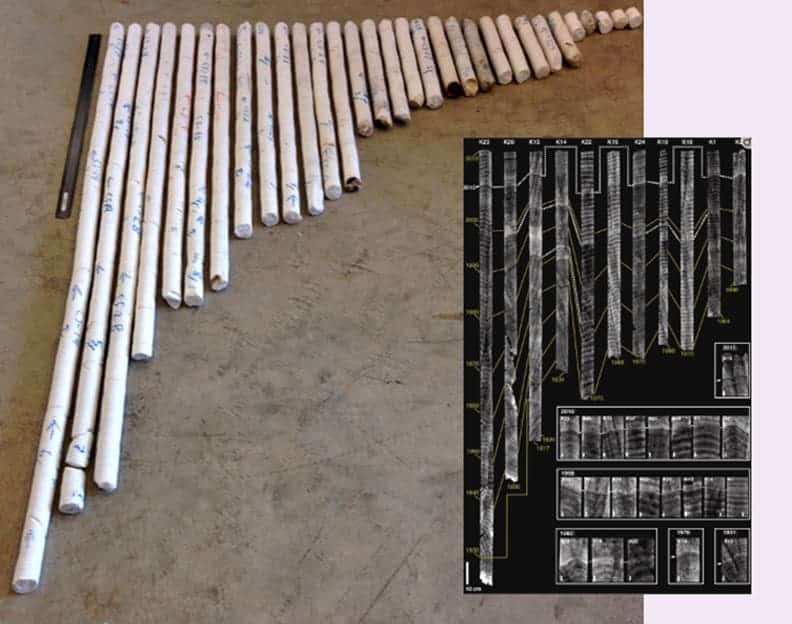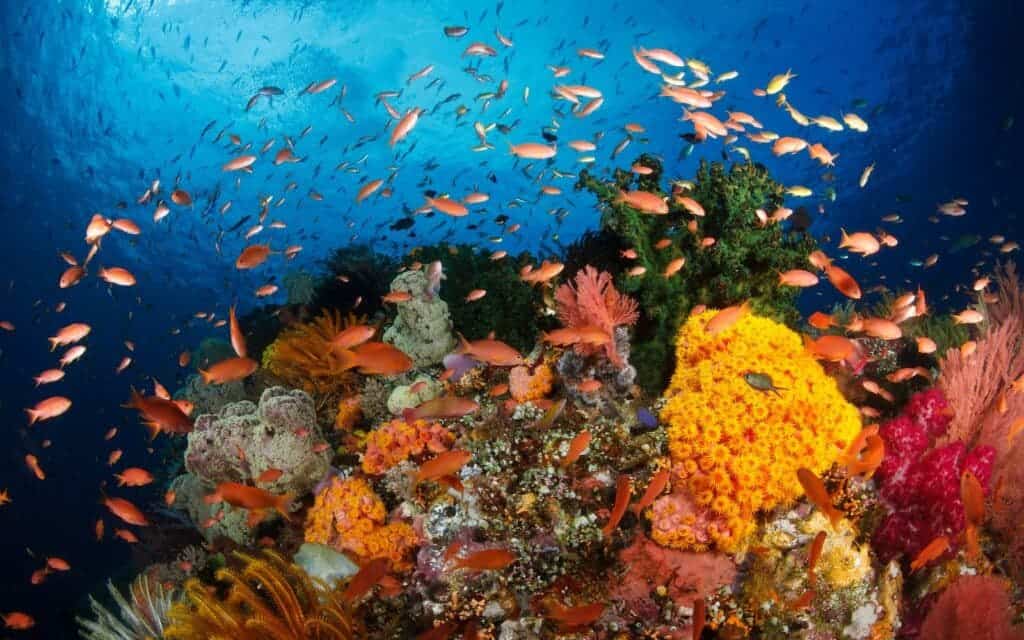Year in and year out, scientist Thomas DeCarlo saw the writing on the wall — the wall of coral reefs, that is — and his findings are sounding the alarm: ocean warming and acidification could spell doom for coral reef ecosystems.

Billion-dollar buffers
“Ocean temperatures are now approaching one degree above what they were in industrial times, with a projected increase of two to four degrees, which could have terrible consequences for corals,” DeCarlo says.
DeCarlo has studied the history of monsoon upwelling, wind patterns, and other weather factors affecting coral reef ecosystems in the Red Sea. His research shows that reefs are essential not just to the corals themselves, but to the entire surrounding ecosystems, and human society as well.
If reefs collapse, so too do biodiverse life systems that rely on them to survive — and the damage will continue to cascade. Coral reefs are a nursery to different marine species, they provide fish for humans, and they buffer shores from storms.
That storm-buffer feature is apparently quite significant in dollars. In a US Geological Survey report, coral reef barriers as a force in flood protection protect $1.8 billion worth of coastal infrastructure and economic activity in the US and trust territories alone. Reefs reduce the energy of the waves as they wash ashore, which prevents or limits coastal erosion, flooding, and water surges.
DeCarlo’s detailed explorations use microsope, climate models, coral cores, and computerized tomography (CT) analysis, to study the relationship between climate stressors, bleaching, and calcification. He’s not the first scientist to study the environmental impact of coral reefs but he has taken a special look at instances where the upwelling of nutrient levels can be toxic to corals.

His plan, he says, is to build a global database of the history of coral bleaching events, helping to fill the gaps in our knowledge of coral resilience and vulnerability. But to do that, we first need to understand how the climate is affecting corals.
High, hot, and deadly
Winds blowing across the ocean surface push water away. Water then rises up from beneath the surface to replace the water that was pushed away, a process known as “upwelling,” explains the National Ocean Service (NOS). The water that rises to the surface is typically colder and is rich in nutrients, which “fertilize” surface waters, and have high biological productivity.
For corals, upwelling can be a blessing or a curse. According to DeCarlo knows, nutrient-dense waters can spell good news or bad news. It depends.
“Summer monsoons circulate nutrient-dense waters from the Gulf of Aden to the Red Sea. The symbiotic algae that live in corals thrive on these nutrients. In return, they provide food and energy for the corals to grow,” said DeCarlo. “But warmer waters create more nutrients, which create more algae, which create more oxygen and waste build-up in corals. When high waste conditions combine with high heat, this situation causes bleaching, which could turn deadly.”
According to the NOS, bleaching events might or might not be a dire threat for coral. If stress caused bleaching is not severe, the coral may recover. But if (1) there is prolonged algae loss and (2) continued stress, coral eventually dies.
There’s much work to be done, and DeCarlo has no intentions of stopping anytime soon. From King Abdullah University of Science and Technology (KAUST) and now on to Hawaii, at Hawaii Pacific University, his work offered valuable insight into the life of corals, but there’s much more research to be done, especially in regards to global warming. DeCarlo’s website states that “global warming is driving an increase in the frequency of mass coral bleaching events worldwide.”

It took the researcher 4 years to finish his PhD studying corals, an accomplishment he says he is “especially proud of,” since it was a first of its kind comprehensive study.
One important takeaway from this research is that coral reef environments are not a cookie-cutter affair. One-sized conclusions and conservation measures cannot address and fix everything. One must recognize the complexities due to what are the oceanographic settings of any individual coral reef.
“Disentangling these oceanographic processes will help us predict when and where we may find coral reefs that are relatively resistant to rising temperatures, and this information will be critical to informing local management decisions.”






